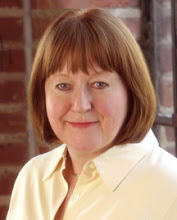The embarrassment of excess continues. Bloomberg reports that Saks is cutting orders from vendors 20% this year and is forecasting improved gross margins:
“The cuts may rein in what Saks Chief Executive Officer Stephen Sadove calls the ‘enormous excess’ that existed last year in stores that cater to the wealthy.
Across the board you are going to find less of the sizes, less of the availability in almost all of the categories,” Sadove, 57, said yesterday in a telephone interview. “You are probably going to see less aggressive markdowns than you saw last year.”
Is anyone out there besides me saying, “duh?”
Put together the 20% reduction in pricing offered by D&G and other high end designers and manufacturers (previous blogs) with the, at least, 20% overstock issue and you might have a good indication how retailers and designers—not just the economy—have contributed to their own problems.
Now CEOs—from Nordstrom’s to Bloomingdale’s, Neiman-Marcus to Saks—are trying to point out that scarcity is a part of luxury, that their inventories have been bloated lately, and that “we’ll not see these levels of excess again.” Even Gucci CEO Patrizio di Marco chimed in:
“We don’t need 75 variations on the same handbag. Two or three are enough.”
The “greed-is-good” mantra—so eloquently stated by Gordon Gekko in the 1987 movie Wall Street—lies at the root of most of the issues we’re facing from housing to health care, retailing to manufacturing. No one wanted to listen to the voice of caution when the party was raging. It’s only now we’re hearing the plea for “enough,” as the luxury liner, the SS USRetail slowly sinks beneath the cold waters of excess.
BTW, the tagline for the movie Wall Street is “Every dream has a price.”
The nation is lost
-
In this terrible time, what disappoints and angers me so about my own field
of journalism — to which I have devoted 50 years of my life — is its
refusal ...
2 months ago


No comments:
Post a Comment